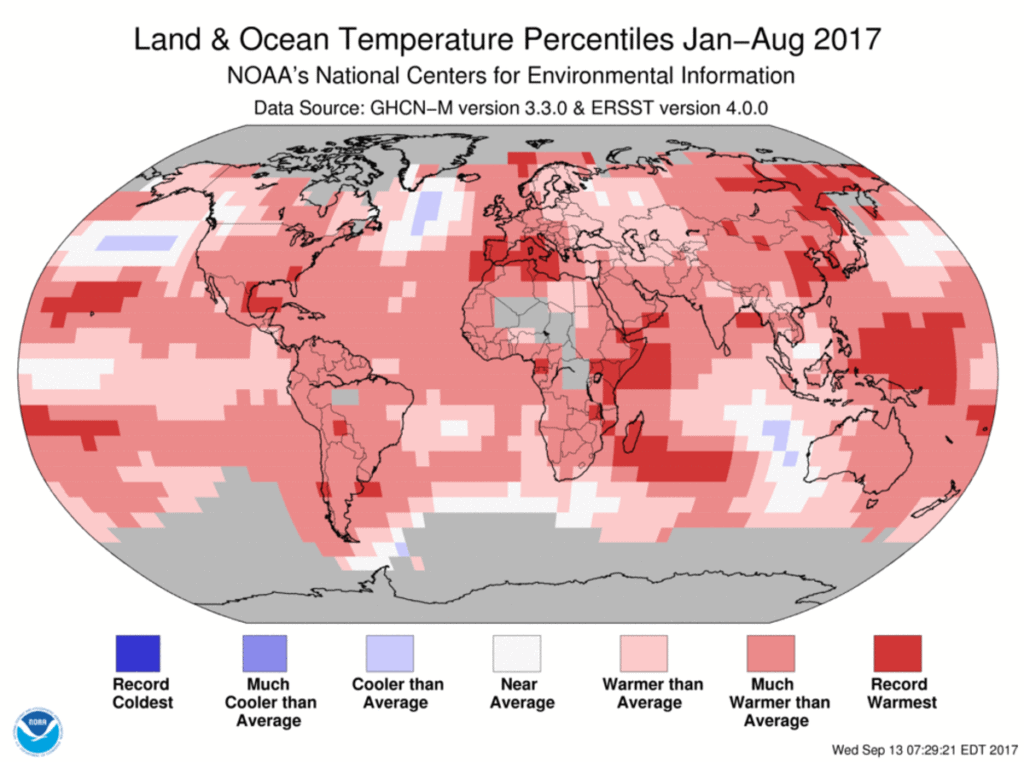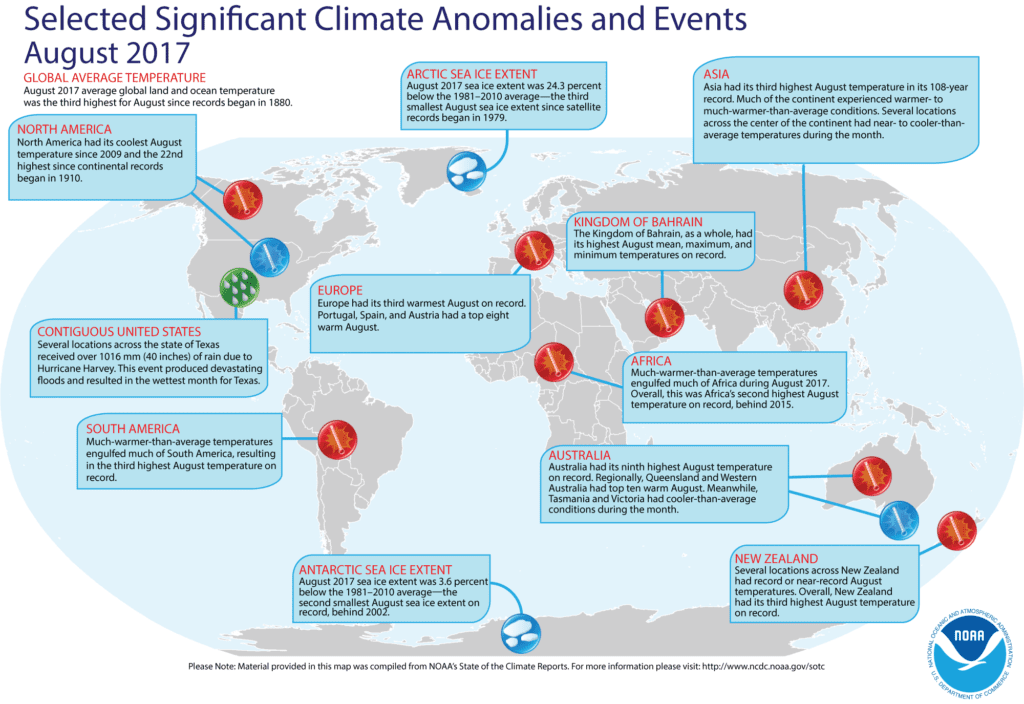As the hurricane season kicks in with ungodly strength, the NOAA just released a new report, raising more alarm flags about global warming.

Summer is ending and it’s time to see how it fared compared to previous ones. Depending on where you live, this summer may seem hotter or cooler than it usually does, but overall, it was a really hot one — one of the hottest on record. According to NOAA and NASA data, so far, only 2016 was hotter than the current year.
Unfortunately, 2016 was abnormally hot, even by modern standards — that’s the only reason why 2017 hasn’t set records yet. Back then, climate scientists bitterly noted these effects.
“It is almost as if mother nature is making a statement,” said climate scientist Michael Mann, at Penn State University in the US. “Just as one of the planet’s two largest emitters of carbon has elected a climate change denier [Donald Trump] – who has threatened to pull out of the Paris accord – to the highest office, she reminds us that she has the final word.”
This wasn’t an isolated event either. It was part of a much larger trend of overall planetary warming. Previously, 2014 and 2015 had also been ‘the warmest year in history.’
“Two years ago, we wrote: ‘The year 2014 was Earth’s warmest in 134 years of records.’ Last year we wrote: ‘2015 was the warmest year ever recorded on Earth, and it was not even close.’ This year, we are running out of ways to say it,” the NASA Earth Observatory wrote in January of this year, when they announced the 2016 record.
Of course, we can’t realistically expect every year to set a new record, but what we can expect is every year to be significantly higher than average; that is exactly what we’re seeing in 2017.

August itself was the 2nd hottest August on record, after only (you’ve guessed it) 2016. The data was also confirmed by NASA’s Goddard Institute for Space Studies.
Here are some other facts released by the NOAA:
- Africa was much hotter than usual — the continent had its second warmest August on record. Meanwhile, South America, Asia and Europe had their third and Oceania its fifth. North America was an outlier, reporting only its 22nd warmest summer on record.
- At the poles, ice is reaching near-record lows. The average Arctic sea ice extent (coverage) for August was 24.3 percent below the 1981-2010 average, the third smallest for the month since satellite records began in 1979. In the Antarctic, sea ice extent fell 3.6 percent below average levels.
- Both land and oceans had higher-than-average temperatures — both ranked second highest on record for record for the year to date.
- The globally averaged land surface temperature for June–August 2017 was 2.07°F above the 20th century average of 56.9°F. This was the second highest for June–August in the 138-year record, behind only 2016.


